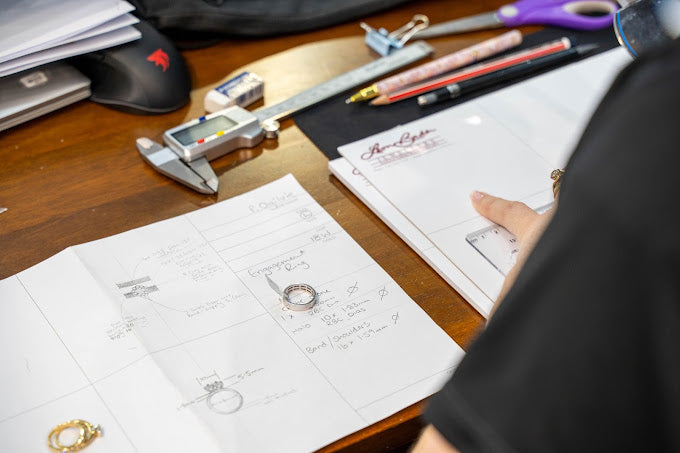
Want to learn about jewellery
Discover the different types of gold, learn expert tips to keep your jewelry looking its best, and explore the art of fine craftsmanship
Getting Started with Basics

Gold
Gold comes in many types, including different purities, colors, and alloys.Purity
- 24K gold: 100% pure gold, the purest and most valuable form of gold
- 18K gold: 75% pure gold
- 14K gold: 58.3% pure gold
- 10K gold: 41.7% pure gold
- 9K gold: 37.5% pure gold
Color
- Yellow gold: Pure gold mixed with copper, silver, and zinc
- White gold: Pure gold mixed with white metals like palladium, silver, or nickel, and then coated with rhodium
- Rose gold: 75% pure gold, 22.25% copper, and 2.75% silver
- Green gold: Pure gold mixed with copper, silver, and zinc
- Black gold: Gold with a black rhodium surface coating
- Blue gold: Gold mixed with gallium or indium
- Purple gold: Gold mixed with aluminum
AlloysGold is also alloyed with other metals to create different properties.For example, white gold is more scratch-resistant than yellow gold, and rose gold is more durable than white or yellow gold.

Gemstone's
Gemstones areminerals that are prized for their beauty, durability, and rarity.They can be used in jewelry and have been used since ancient times.How are gemstones formed?
- Formed deep within the earth and brought to the surface by molten rock explosions
- Crystallized from hot fluids and gases as they cooled and solidified
- Formed from liquids that filtered into cracks and pockets in rock
- Formed when rocks were heated and pressurized by earth movements
Popular gemstones:
- DiamondThe most famous and sought-after gemstone
- EmeraldA variety of the beryl mineral that is green in color
- SapphireA durable stone that is most recognized for its deep, celestial blue color
- OpalA rare and precious gemstone that is expensive to prospect and mine for
- AquamarineA blue to blue-green member of the beryl family that is the March birthstone
Gemstone grading
- Gemstones are graded for their hardness on the Mohs' Scale
- Amber is the softest gemstone, and diamond is the hardest
- True pearls are the only jewel created by a living animal

Diamond's
Diamonds area naturally occurring form of carbon that are the hardest known natural substance.They are formed deep within the Earth and are extremely rare.Formation
- Diamonds are formed under intense heat and pressure
- They are pushed to the surface by volcanic lava
- Most natural diamonds are between 1 billion and 3.5 billion years old
Properties
- Diamonds are colorless, odorless, and tasteless
- They are poor conductors of electricity and insoluble in water
- Diamonds have a melting point of 4000°C, which is 2.5 times hotter than steel
- They rate a 10 on the Mohs scale of hardness
Uses
- Diamonds are used in the manufacture of grinding wheels for sharpening metal-cutting tools
- They are also used as loose grains suspended in oil or water for lapping and polishing
Other facts
- The world's largest diamond was the Cullinan, found in South Africa in 1905
- Synthetic diamonds can be grown from high-purity carbon under high pressures and temperatures
- Synthetic diamonds are often yellowish in color

Pearl's
Pearls arehard, lustrous gemstones that form within mollusks.They are made of calcium carbonate and nacre, the same material as a mollusk's shell.How pearls form
- An irritant lodges in the soft tissue of a mollusk
- The mollusk coats the irritant with layers of nacre as a defense mechanism
- The layers of nacre determine the pearl's luster
Types of pearls
- Saltwater pearls: Akoya, South Sea, and Tahitian pearls
- Freshwater pearls: Grown in lakes, rivers, and ponds, mainly in China
Pearl value
- The finest quality natural pearls have been valued as gemstones for centuries
- The pearl market is expected to grow at a compound annual growth rate of 14.2% from 2024 to 2032
Pearl care
- Pearls need humidity and moisture to maintain their luster
- Wearing pearls is better than storing them in a safety deposit box
- If you need to store pearls, put a moistened cloth in an open jar with them
Pearl jewelry
- Pearls are often strung into necklaces after a small hole is drilled through the center of each pearl
